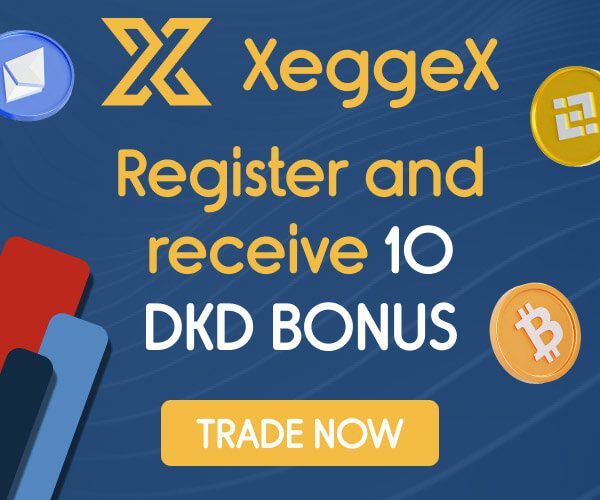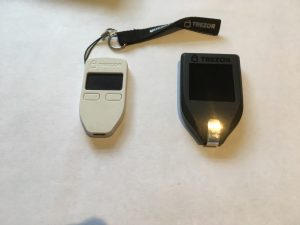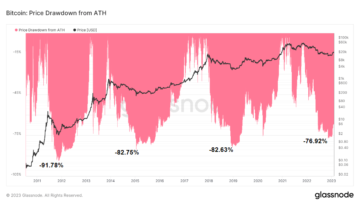Circle and Axelar recently announced a partnership that has the potential to revolutionize the crypto industry altogether.
Such a bold statement is one that I would rarely make, but when Axelar reached out to share the news of this accomplishment, I was blown away. The issue of cross-chain bridges and their notoriously high-security risk is one that I have been talking about for months on the CryptoSlate Twitter AMAs and the SlateCast Podcast.
I was shocked to learn that a significant step toward solving this problem had already been achieved. However, I was less shocked that Axelar was involved in the new technology. When CryptoSlate interviewed Axelar at EthCC this year, it was clear to me that the company was a step above when it came to addressing cross-chain communication.
Benefits of a fully composable USDC
The new partnership with Circle merges Circle’s Cross-Chain Transfer Protocol (CCTP) with Axelar’s General Message Passing technology to allow genuinely composable cross-chain communications. According to Circle, benefits for the end user include:
- USDC can now be a routing asset for any cross-chain swap or transfer.
- 1-click cross-chain transactions are paying gas only on the source chain.
- Increased security by removing the need for bridged assets.
- No slippage as USDC transfers no longer require liquidity pools
- Precise transaction monitoring through axelarscan.io, which traces all USDC cross-chain transactions
Centralization of USDC
The dream of a genuinely interoperable web3 is a step closer today following the USDC announcement. The only gripe I have is that USDC operates in compliance with OFAC sanctions, meaning it is not censorship-proof.
As a UK citizen, OFAC sanctions do not apply to me, yet this cannot be avoided when using USDC. While I do not desire to interact with wallets linked to terrorist organizations, I also do not believe that Tornado Cash should be subject to international sanctions. Open-source code is impartial, neutral, and apolitical. Therefore, I’m afraid I have to disagree with the censoring wallet addresses linked to Tornado Cash by USDC.
Yet, will I give up on this belief in return for the convenience of a fully composable web3 ecosystem? Such decisions have been partly to blame for the rise of centralized social media platforms controlling our data online. Humans are quick to give up on weaker-held beliefs in favor of more convenience. It is less the censorship of Tornado Cash that worries me and more the precedent it sets. If Tornado Cash can be essentially removed from the Ethereum network, then so can any dApp or smart contract.
Web3 and crypto, at their core, are pioneers of permissionless interaction. Yet, in my opinion, when you add a centralized censorship system to the network, the benefits weaken. While USDC may be one of the safest stablecoins in the current market, it is far from the most decentralized.
Usability and convenience over decentralization
However, regardless of your opinion of Circle censoring addresses, there is little argument that utilizing USDC as a routing tool for cross-chain swaps is an incredible advancement. Users are not required to hold USDC for any longer than needed for the trade to complete.
Holders of USDC gain access to more straightforward and more efficient cross-chain purchases, while those who do not wish to hold USDC can still benefit from its new cross-chain routing capabilities. Further, other benefits, such as no slippage and enhanced security, do not rely on users holding USDC in their wallets.
Assets held in bridges, when transferred across chains, are a significant issue for the crypto industry. Losing bridged tokens can devastate and cripple an entire ecosystem overnight. By using USDC as a routing method for cross-chain swaps, bridged assets are, thankfully, a thing of the past. The video below showcases a cross-chain native USDC swap using Axelar’s integrated technology.
[embedded content]
Improving the UX of web3
Further, in order to attract new users to web3, the user experience must be improved. I have written about this previously, and the ability to swap from one chain to another in one click is a huge step forward. While purists like myself may have reservations about USDC due to the precedent set by censoring Tornado Cash, many users will be less concerned. I have to heed my own advice; as I stated on Twitter back in August, we must “stop gatekeeping against new people.”
The biggest issue with #web3 is poor #UX.
How do we fix this?– Stop gatekeeping against new people
– Focus on the user NOT the technology
– Use familiar a UI – swipe, drag, tap
– Don’t give new users the entire kitchen sink
– Advance education w/modular features not FAQ🧵
— Ξ Akiba.lens Ξ 🦇🔊 (@akibablade) August 4, 2022
Should Axelar partner with other stablecoins such as Tether, DAI, Pax Dollar, and Binance USD, I would be far more excited about the state of web3. A world where users have a choice of fully interoperable stablecoins to suit their druthers is one in which I would be unbelievably bullish.
Speaking with Axelar, integrating with other stablecoins may be possible, but no details about other partnerships have been released. For now, the composability of USDC already opens many new doors for both crypto adoption and usability. I am looking forward to being able to swap USDT on Ethereum for BNB or AVAX without having to use complicated cross-chain bridges. One-click swaps will undoubtedly improve the UX of web3 and attract more people to the space.
Cross-chain NFTs
Lastly, the new composability of USDC also allows users to buy NFTs on another chain without ever having to hold the native token of the chain the NFT was minted on. If I have a Phantom wallet and want to purchase an NFT on Ethereum, I can now do so using the SOL in my Phantom wallet. The SOL will be converted to USDC on Solana, then routed to Ethereum and swapped for ETH. After the NFT is purchased, it will be bridged through Axelar and minted on the Solana blockchain in my Phantom wallet. If I ever want to transfer the NFT to an Ethereum wallet, then the Solana-based NFT will be burned, and the original NFT will be unlocked.
While cross-chain NFTs will still need to be held in a bridge, the UX of the purchase is undoubtedly better as the purchaser has never had to touch ETH to acquire the NFT. Cross-chain NFTs that do not require the original NFT to be held on a bridge are not a possibility due to their non-fungible nature, but this is a huge step forward in terms of UX.
Final thoughts
Ultimately, the partnership between Axelar and Circle is excellent for the entire crypto industry. It could be one of the most significant innovations to come out of this bear market. We’re sure to see an improved user experience across DeFi, GameFi, and almost every other area of web3 over the coming months as a result of this achievement.
- Bitcoin
- blockchain
- blockchain compliance
- blockchain conference
- coinbase
- coingenius
- Consensus
- crypto conference
- crypto mining
- cryptocurrency
- CryptoSlate
- decentralized
- DeFi
- Digital Assets
- ethereum
- featured
- machine learning
- non fungible token
- Opinion
- plato
- plato ai
- Plato Data Intelligence
- Platoblockchain
- PlatoData
- platogaming
- Polygon
- proof of stake
- Technology
- Tokens
- W3
- Web3
- zephyrnet












